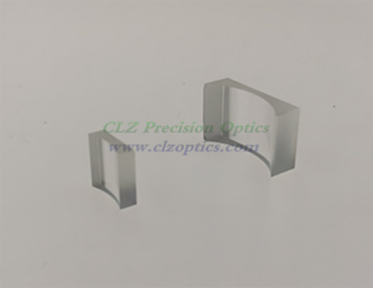In the realm of optics, understanding the nuances between different types of lenses is crucial for various applications. Two common types of optical lenses that are frequently encountered are cylindrical and spherical lenses. While both serve the fundamental purpose of refracting light, they possess distinct characteristics that make them suitable for specific tasks. In this comprehensive guide, we will delve into the intricacies of cylindrical and spherical lenses, elucidating their disparities and applications.
What are Cylindrical Lenses?
Cylindrical lenses as the name suggests, have a curved surface that is part of a cylinder. Unlike spherical lenses, which have a uniform curvature across their entire surface, cylindrical lenses feature curvature only in one direction while remaining flat in the perpendicular direction. This unique design enables cylindrical lenses to focus light in one dimension while maintaining it in the other, making them indispensable for correcting astigmatism and shaping laser beams.

Applications of Cylindrical Lenses
Correction of Astigmatism
Astigmatism occurs when the cornea or lens of the eye has an irregular shape, causing blurred vision. Cylindrical lenses are utilized in eyeglasses and contact lenses to correct this condition by compensating for the irregular curvature of the cornea or lens.
Laser Beam Shaping
In laser technology, cylindrical lenses play a vital role in reshaping laser beams. By altering the divergence of the beam in one direction, cylindrical lenses can transform a circular laser beam into a line or an elliptical shape, depending on the desired application.
Understanding Spherical Lenses
Spherical lenses are the most common type of lenses encountered in everyday optics. They have a uniform curvature across their entire surface, resembling a segment of a sphere. This uniform curvature enables spherical lenses to converge or diverge light rays, facilitating tasks such as focusing images in cameras, magnifying objects in microscopes, and correcting refractive errors in the human eye.
Applications of Spherical Lenses
Imaging Systems
Spherical lenses are extensively employed in imaging systems, including cameras, telescopes, and microscopes. Their ability to converge or diverge light rays allows them to focus images onto a sensor or film, thereby capturing clear and sharp images of distant objects or microscopic details.
Corrective Eyewear
The majority of prescription eyeglasses and contact lenses utilize spherical lenses to correct common refractive errors such as nearsightedness (myopia), farsightedness (hyperopia), and astigmatism. By bending light rays to compensate for irregularities in the eye's curvature, spherical lenses ensure clear vision for individuals with visual impairments.
Key Differences Between Cylindrical and Spherical Lenses
Curvature
The primary distinction between cylindrical and spherical lenses lies in their curvature. While cylindrical lenses exhibit curvature in only one direction, spherical lenses possess uniform curvature across their entire surface.
Optical Properties
Cylindrical lenses are adept at focusing light in one dimension while maintaining it in the other, making them suitable for tasks requiring astigmatism correction and laser beam shaping. In contrast, spherical lenses converge or diverge light rays uniformly across their surface, enabling them to focus images and correct refractive errors.
Applications
Cylindrical lenses find applications in correcting astigmatism, shaping laser beams, and optical character recognition (OCR) systems, among others. On the other hand, spherical lenses are ubiquitous in imaging systems, corrective eyewear, and magnification devices.
Conclusion
In summary, understanding the disparities between cylindrical and spherical lenses is essential for selecting the appropriate optics for various applications. While cylindrical lenses excel in tasks requiring one-dimensional focusing and beam shaping, spherical lenses are indispensable for imaging, magnification, and correcting refractive errors. By comprehending the unique properties and applications of these lenses, professionals in optics and related fields can optimize their usage for optimal performance and results.


Comments
Please Join Us to post.
0